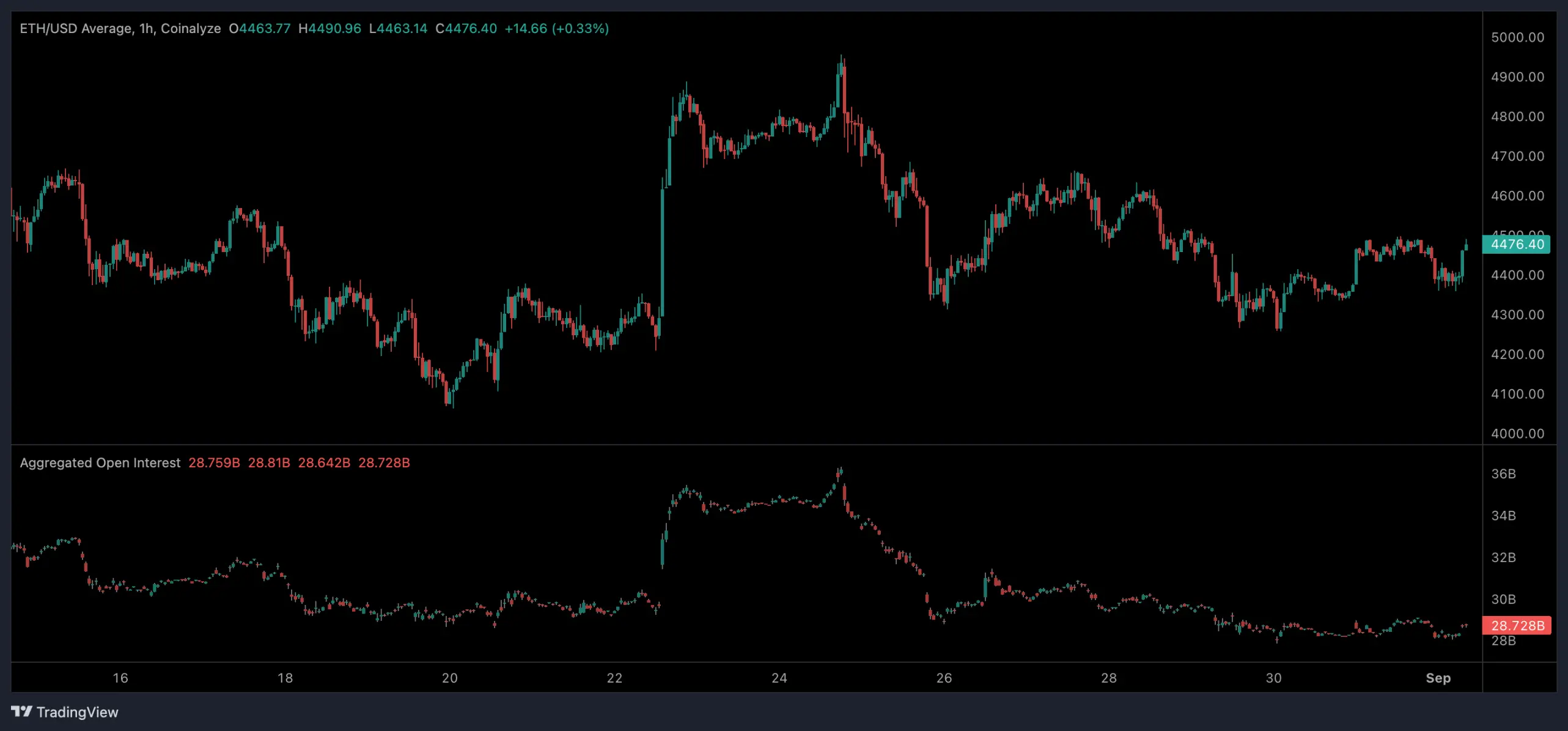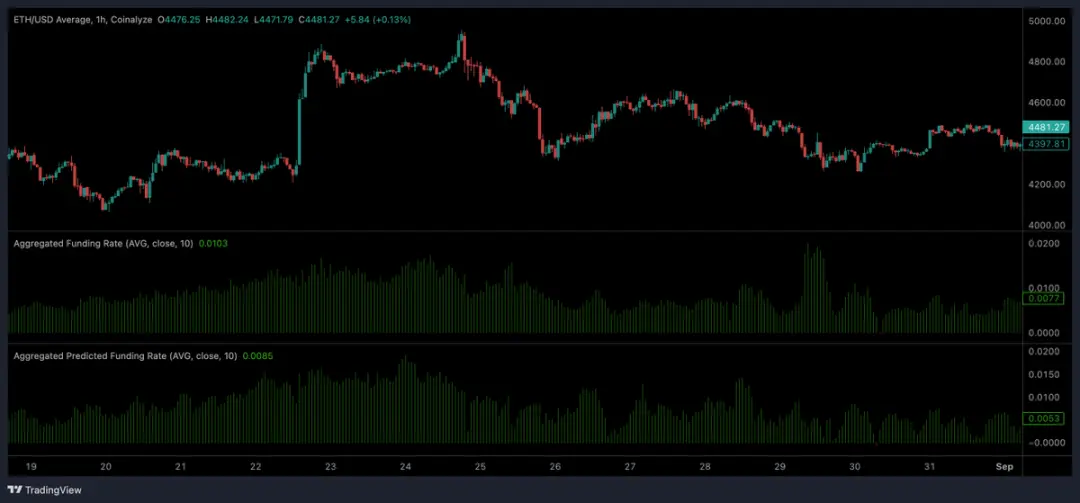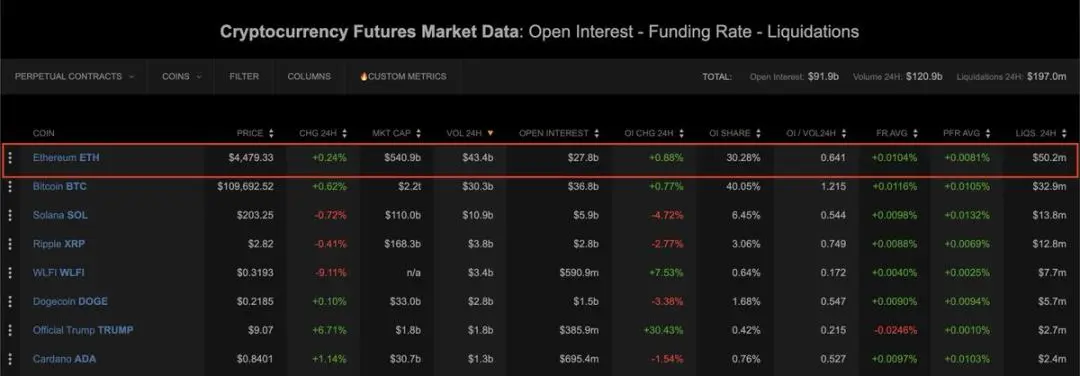Author: Basit
Compiled by: Luffy, Foresight News
TL;DR
- On just the Hyperliquid platform, traders pay millions of dollars in funding fees annually;
- The funding fee scale on Binance reaches hundreds of millions of dollars; as for other platforms? I cannot provide statistics at the moment;
- The article contains several basic calculations; if you lack patience, feel free to skip them.
Funding fees were originally designed as a mechanism to encourage fair market trading, but they have now become a harvesting ground for arbitrageurs.
What are funding fees?
Funding fees are the costs paid periodically between traders (long and short sides) to balance the price difference between perpetual contract prices and spot prices.
For savvy players, this seemingly insignificant "change" can ultimately accumulate into millions of dollars in profit.
The core question of my research is: "How much do people earn through arbitraging funding fees?" In other words, "How much funding fee is paid in total among traders?"
To clarify this question, we need to establish:
- The "total cumulative funding fees paid across all cryptocurrency perpetual contract markets" will be a staggering number, potentially reaching hundreds of millions of dollars;
- The total funding fees for a specific exchange (such as Binance, Bybit, Hyperliquid, dYdX, etc.);
- The total funding fees for a single asset (such as Ethereum perpetual contracts since launch or within a single year).
In short: Currently, there is no publicly available statistic for the "total cumulative funding fees across all cryptocurrency perpetual contracts."
Most exchanges and data service providers publish funding fees, open interest (OI), and historical data, but no one compiles every funding fee payment from all platforms into an official number.
However, in the following sections, I will:
- Explain why there is no precise data for the "global total funding fees";
- Share a "simple and correct method" to calculate total funding fees;
- Provide a "rough but transparent estimation range," including: global annual funding fee scale, reasonable estimation scale for Binance, and reasonable estimation scale for Hyperliquid.
Why is there no "cumulative funding fee total"?
Funding fees are peer-to-peer transfers between long and short traders, and the recording methods vary across centralized exchanges (CEX), decentralized exchanges (DEX), and on-chain systems.
Data service providers (like Coinglass) provide funding fees, open interest, and historical charts, but do not publish a "total cumulative funding fee covering all platforms and all markets." This is because funding fees occur between traders, not collected by the platforms.
To calculate this total, we need to obtain time series data of "funding fee × open interest" from all relevant platforms and then make reasonable estimates.
This research uses Ethereum (ETH) perpetual contracts as an example for analysis.


Open interest data for Ethereum across different platforms
Correct calculation method
For any perpetual contract market and any time window, the total funding fee can be calculated using the following formula:
Total funding fee for a certain period ≈ Σₜ [Funding fee (t) × Open interest (t) × Time interval (Δt) ]
Where:
- Funding fee (t): The actual funding fee at a certain timestamp (t);
- Open interest (t): The nominal open interest measured in USD;
- Time interval (Δt): The funding fee settlement period (most centralized exchanges settle every 8 hours, i.e., three times a day).
Thus, we can calculate the precise total funding fee by integrating historical data series from platforms like CoinGlass.
My estimation
To derive an "estimation range" rather than a "false single value," I adopted multiple sets of assumptions ranging from conservative to aggressive:
Common choices:
- Statistical time range: January 1, 2025, to August 27, 2025, totaling 239 days (calculated based on three settlements per day, totaling 717 settlement periods);
- Funding fee settlement period: 8 hours per settlement (three times a day, applicable to Binance and most perpetual contract platforms);
- "Total nominal open interest for Ethereum perpetual contracts across the market": considered in three scenarios — $20 billion (low), $27.6 billion (medium, current actual data), $30 billion (high);
- "Open interest weighted average funding fee (every 8 hours) for Ethereum": using aggregated data of 0.000103 (i.e., 0.0103%).

As you can see, the actual open interest for all Ethereum perpetual contracts is $27.7 billion.
When the funding fee is positive, it is paid from longs to shorts; when negative, it is paid from shorts to longs. Different assumptions yield different results from "conservative to aggressive."

Annual estimation formula (based on the above time window)
Annual total funding fee ≈ Average open interest × Average funding fee per period × (239 days × 3 times/day)
Estimation results: Global annual funding fee scale (rough range)
Based on 239 days of data and the above formula:
- Conservative scenario (open interest $20 billion, average rate 0.000103) → approximately $1.48 billion;
- Medium scenario (open interest $27.6 billion, current actual data, average rate 0.000103) → approximately $2.04 billion;
- Aggressive scenario (open interest $30 billion, average rate 0.000103) → approximately $2.2 billion.
Interpretation: Based on the medium scenario (current Ethereum open interest), the global annual total funding fee for cryptocurrency perpetual contracts is estimated to be at the lower limit of the billion-dollar level; during extreme periods of high leverage (funding fees soaring + high open interest), the annual total could reach several billion dollars.
Note: This is a "summarized estimated value" rather than a "precise measured value," as we used the "average assumption for the entire Ethereum market." (The above methods and examples can also be applied to other assets, such as Bitcoin, etc.)

Average funding fee chart for Ethereum
Estimation results: Reasonable scale for Binance (based on market share)
Binance holds a significant market share in perpetual contract trading (this study estimates it at 17%, but you can adjust this ratio based on preference).
Substituting the 17% market share into the above global scale scenarios:
- Conservative scenario → approximately $251 million over 239 days;
- Medium scenario → approximately $347 million over 239 days;
- Aggressive scenario → approximately $377 million over 239 days.
This number seems astonishing, but it is indeed reasonable.
Estimation results: Scale of Hyperliquid
The scale of Hyperliquid is much smaller than that of Binance (though I believe this may change soon).
Assuming that the open interest of Hyperliquid's Ethereum perpetual contracts accounts for about 5.3% of the global market (a very rough estimate), substituting into the global scale scenarios:
- Conservative scenario (global $1.48 billion) → approximately $78.3 million over 239 days;
- Medium scenario (global $2.04 billion) → approximately $108 million over 239 days;
- Aggressive scenario (global $2.22 billion) → approximately $117.4 million over 239 days.
Core summary: What does this mean for you?
- Currently, there is no publicly available precise data for the "global cumulative funding fee total." Anyone claiming "cumulative funding fee total = X dollars" is based on aggregated data from multiple sources (and assumptions similar to those in this article);
- The actual scale of global annual funding fees may range between "lower limit of several billion dollars" and "upper limit of several billion dollars," depending on market conditions (based on reasonable assumptions in the medium scenario, approximately $2-5 billion/year);
- The annual funding fee scale for Binance could reach "hundreds of millions of dollars" (depending on market share and funding fee fluctuations);
- The scale of Hyperliquid is relatively small, with an annual funding fee scale of about "millions to hundreds of millions of dollars," depending on its average open interest.
免责声明:本文章仅代表作者个人观点,不代表本平台的立场和观点。本文章仅供信息分享,不构成对任何人的任何投资建议。用户与作者之间的任何争议,与本平台无关。如网页中刊载的文章或图片涉及侵权,请提供相关的权利证明和身份证明发送邮件到support@aicoin.com,本平台相关工作人员将会进行核查。




